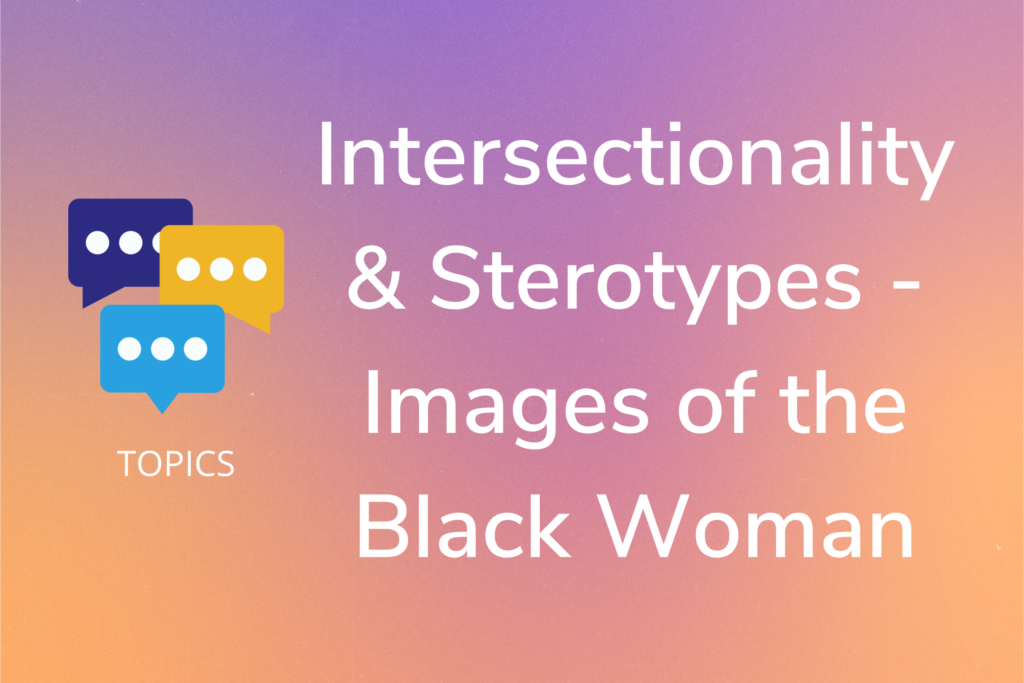Social inequalities find expression in many different forms like structural inequalities, discrimination, biases, or stereotypes. They are usually very complex and shaped by the interplay of various social constructions like gender, ‘race,’ class, sexuality, ability, or ethnicity. The entanglement of different social constructions in forming social inequalities is called intersectionality. The critique of intersectionality was co-founded by Professor Kimberlé Crenshaw and ignited by Black U.S. feminists who rejected dominant feminist movements’ construction of ‘the women’ as a single homogenous group. However, intersectionality does not concern Black women in the U.S. only, but generally influences social inequalities, and is a crucial concept for their study and resolution. Intersectionality, thus, of great relevance for the G-Versity network in informing the critical investigation of gender diversity. In this post, I illustrate how intersectionality is manifested by reviewing the emergence of popular stereotypes about Black women in the U.S.
Stereotypes about Black Women in the U.S.
It is presumed that most stereotypes about Black women in the U.S. developed during times of slavery and segregation. While they might have changed in explicitness and expression, they still inform or have at least influenced many stereotypes and biases regarding Black women today. It is important to note here that stereotypes are dependent on social, cultural, and historical contexts. Furthermore, they are informed by ideology and power structures, and conflate people into homogeneous groups. Stereotypes, thus, do not accurately represent reality but rather make up predefined frames of interpretation that are often referred to as “pictures in our heads.”
Matriarch
The stereotype of the “Matriarch” depicts Black women as masculine, aggressive and apt to emasculating men, who are advised to better stay away from them. By contrast, White women were stereotypically perceived as soft and feminine. However, it is important to realize that this image pertained to the believed norm of White women belonging to a certain social class, and following other norm assumptions of, for example sexuality, ability, or age.
Jezebel
A very common stereotype about Black women was that of the “Jezebel” describing a lusty and lascivious woman that seduces men and embodies the opposite of the ideal pious and abstemious Victorian Lady in the 19th century. Speculation as to how this stereotype came about include the often-naked exhibition of Black women being sold as slaves as well as the fact that Black female slaves often pinned up their skirts during work for practical reasons.
Mammy
Another common stereotype of Black women was the “Mammy”: a loving woman who devotedly cares for the children of her White house masters, manages the household, cooks, and in some variations, even serves as a substitute for the mother. The origin of the “Mammy” stereotype is thought to lie in the fact that most house slaves were women. Later, the “Mammy” stereotype transformed to “Sapphire,” a cantankerous and bossy woman, also referred to as the “Black Bitch.” With this transformation, the “Mammy” was ascribed matriarchal characteristics as well.
Welfare Queen
A last fundamental stereotype of Black women is that of the “Welfare Queen” also referred to as “Welfare Mother.” It describes a lazy, stubborn, selfish, immoral, and greedy woman who does not work much, and spends a lot of time at home with her many children, whom she influences with her sponging nature. Origins of that image can be found in the stereotypes of the Jezebel, Sapphire, and Matriarch.
These illustrations show that the emergence of stereotypes is based on unequal power structures as well as ideologies to justify those linked to the social constructs of gender and ‘race.’ Further, influencing factors include, for example, the social status of these women. Thus, these stereotypes illustrate the intersectionality of different social constructs in shaping social inequalities and emphasize the need for a holistic and contextualized investigation of inequality.
Suggested readings
Barskanmaz, C. (2019, May 31). Reading antidiscrimination law with Crenshaw, but without
Rasse? | Gunda-Werner-Institut. Heinrich-Böll-Stiftung. https://www.gwi-boell.de/en/2019/05/31/reading-antidiscrimination-law-crenshaw-without-rasse
Case, Federica: Social Psychology Glosary (2): Stereotype. Solutions. https://gversity-solutions.org/blog-solutions/topics/social-psychology-glossary-2/
Collins, P. H. (2015). Intersectionality’s definitional dilemmas. The Annual Review of Sociology, 41, 1–20.
Jordan-Zachery, J. (2009). Black Women, Cultural Images, and Social Policy. New York: Routledge.
Lippmann, W. (1964). Die öffentliche Meinung. München: Rütten + Loening Verlag GmbH.
Morton, P. (1991). Disfigured Images: The Historical Assault on Afro-American Women. New York: Greenwood Press.
Stephens, D. P., & Phillips, L. (2003). Freaks, Gold Diggers, Divas, and Dykes: The sociohistorical Development of adolescent african american women´s sexual scripts. Sexuality and Culture, 7(1), S. 3-49.
White, D. (1985). Ar´n´t I a woman? Female Slaves in the Plantation south. New York: Norton.

What’s on TV? The role of gender and social status in media representation (Germany)
